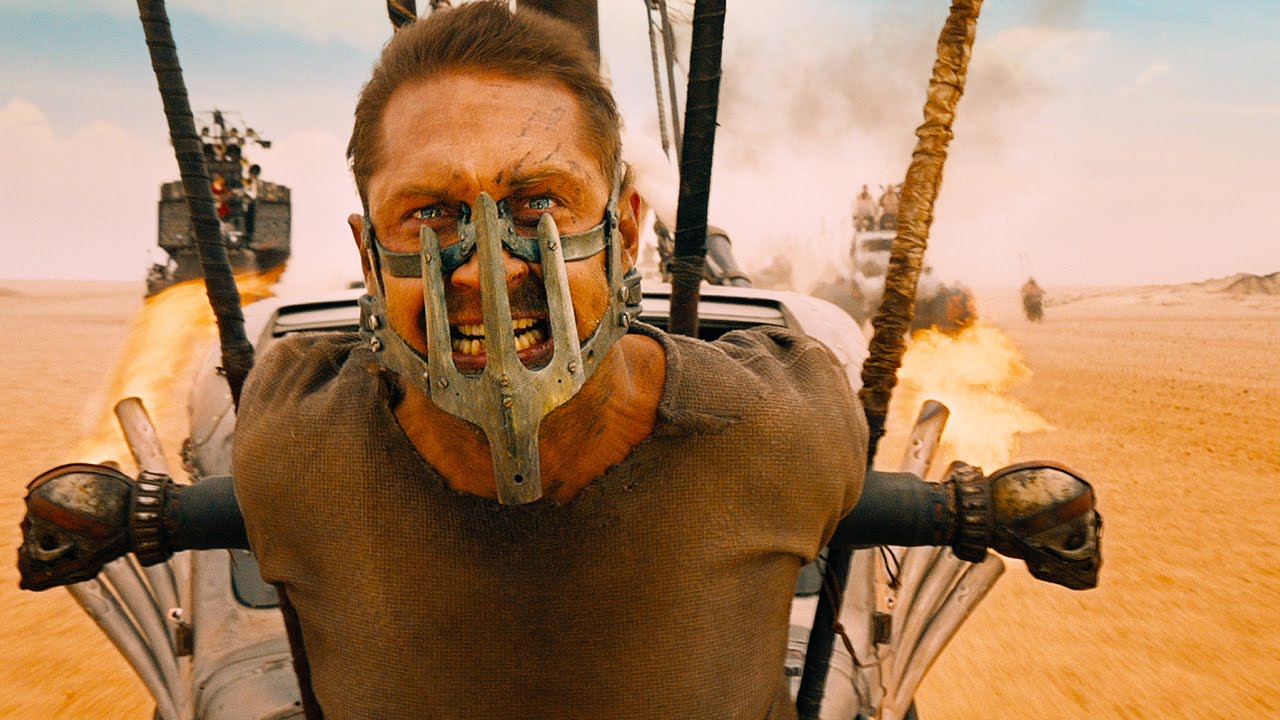
“Who broke the world?” asks graffiti scrawled across the room where Immortan Joe locked up his “wives” in Mad Max: Fury Road. Fury Road and each of its three predecessors argue pretty persuasively that the answer is men like Immortan Joe: power hungry people whose actions lead to war and economic disaster.
But an interesting fan theory poses another culprit, one whose breaking made the world of Mad Max: Max Rockatansky, the heroic road warrior portrayed by Mel Gibson and Tom Hardy. According to this idea, the policeman Max’s mind broke down after the events of the first movie in 1979, and everything that’s happened since exists in his wild imagination.
Why Does Mad Max Prompt Fan Theories?
One of the most shocking moments in the Mad Max universe occurs midway through the first film: Toecutter (Hugh Keays-Byrne, who would later play Immortan Joe) runs down Max’s toddler son. The murder signals a shift in Max’s understanding of what life’s become. It’s proof that the civilized world he and his fellow police officers tried to protect was already dead, even though the movie takes place before the full apocalypse.
… And yet, at the start of Mad Max: Fury Road, Max witnesses a series of flashbacks about relieving Max’s failures. Among them, the now recast road warrior sees the child that Toecutter murdered but instead of a son, the figure in the flashback is a daughter. This is just one of many inconsistencies across the franchise. Not only does Gibson play the character for three movies, only to be replaced by Tom Hardy for Fury Road, but the timeline doesn’t track. The first Mad Max movie takes place just before the apocalypse when limited gas resources are making the roads more violent, but the police force for which Max works remains. Civilization is still breathing, albeit if only on its last gasps.
By the time we hit The Road Warrior (or Mad Max 2 abroad), society seems to have completely fallen apart despite Max aging very little. Not only has it collapsed, it seems to have been a long time gone away, with children of the Wasteland having no recollection of a world before all that was left was marauding gangs. Furiosa: A Mad Max Saga only further blurs this timeline discrepancy, as it tracks the eponymous Imperator’s entire life. That full life takes place after the apocalypse with the Green Place she spends an early idyllic childhood in having apparently existed for many years. But as we saw in Fury Road, both she and Max are roughly the same age. So how can she have grown up a child of the Wasteland while Max was a husband and father himself before the world descended into total chaos?
The simplest explanation for these inconsistencies is that George Miller and his co-creator, the late Byron Kennedy, like playing loose with the timeline. He doesn’t care as much about dates and canonical mythology as he does high-octane action and heady themes.
Nonetheless, fans have had fun posing their own ideas. One of the most popular notes that Max in Fury Road plays with the music box that Max gives the Feral Kid at the end of The Road Warrior. Based on this connection, they argue that the Feral Kid actually grew up to be the Hardy version of Max, appropriating the name of the road warrior he so admired. Another suggests that Max becomes a folk hero after the apocalypse. Based on the narration at the start of The Road Warrior, and continued into kid’s adventure of Mad Max Beyond Thunderdome, this theory argues that we’re watching stories told by kids in the Wasteland, with the details always changing and exaggerated.
Like most fan theories, these ideas have plenty of holes (did the Feral Kid just so happen to get the exact same leg injury as the first Max?) and don’t pay off which much more thematic relevance. But there’s one popular theory that changes the way we think about the franchise altogether…
Max Really Goes Mad
“In this maelstrom of decay, ordinary men were battered and smashed… men like Max, the warrior Max. In the roar of an engine, he lost everything and became a shell of a man, a burnt-out, desolate man, a man haunted by the demons of his past, a man who wandered out into the Wasteland.”
For anyone who didn’t take the “Mad” part of the name seriously, this bit of narration from the start of The Road Warrior tells viewers exactly what happened to Rockatansky after the end of the first movie. His mind broke and he lost everything, all but his regret and guilt. A straight reading of that narration indicates that Max finds a modicum of redemption when he frees a group of scavengers from the terror of Lord Humungus (Kjell Nilsson) and his marauders. To be sure, the connection between Max and the Feral Kid (Emil Minty) has hints of a found-father dynamic. Likewise Max helps the children hidden in Planet Erf in Mad Max Beyond Thunderdome, breaking them free from Aunty Entity (Tina Turner) and the forces in Bartertown.
However, one fan theory reads that opening narration as a description of Max’s mental state after the first film. In his hallucinatory, guilt-ridden state, the Max who failed to save his family imagines himself as a hero who rescues others. The Feral Kid, the children of Planet Erf, the wives in Fury Road—none of these people actually exist. Instead they represent Max’s unending guilt and failure, just one more victim of the Wasteland dreaming of saving phantoms in place of the wife and son he let down.
By putting all of these heroic acts within the realm of fantasy, the theory wildly changes Max’s story, making it something far more tragic. Max becomes not a wanderer who does good deeds for people who need him, a bastion of decency in a lawless land. Instead he’s a literal idiot, a man stuck in his own mind who doesn’t help anyone, just one more casualty of the broken world.
Making Meaning From Madness
In an interview a 2015 interview with IGN, an interviewer shared with Miller the theory about the Feral Kid growing up to become the new Max. To the surprise of no one, Miller dismissed the theory out of hand. However, he didn’t dismiss the practice of making fan theories.
“That’s great,” he said with an approving smile, even if he couldn’t endorse the specific idea. “This sounds strange, coming from the brain from where these stories come out from, but that’s great,” he said, encouraging these theories. “In a way, these are allegories,” Miller continued, “meaning is in the eye of the beholder.” Noting the reoccurring tropes throughout the franchise, including tyrannical leaders and the struggle over resources, Miller admitted, “You interpret the story according to how you see the world.”
With that in mind, the “Max Goes Mad” theory has some real significance. It’s not just a way to explain plot and lore discrepancies that didn’t bother Miller and his co-creators. It’s also a way to interpret the world through a far more cynical prism, reducing Max to a victim instead of a hero. But that is a valid interpretation based on the way someone understands our world. If you look at the real world and see real-world Immortan Joe-style demagogues and don’t see how one person can make a difference, then you would interpret Max’s acts of resistance as pure fantasy. As despairing as this sounds, it also reminds us of the connection between even far-fetched movies and the real world. It shows us that our world can be broken too, and asks us to do whatever we can to prevent that.
The post The Mad Max Fan Theory That Breaks the Franchise appeared first on Den of Geek.




